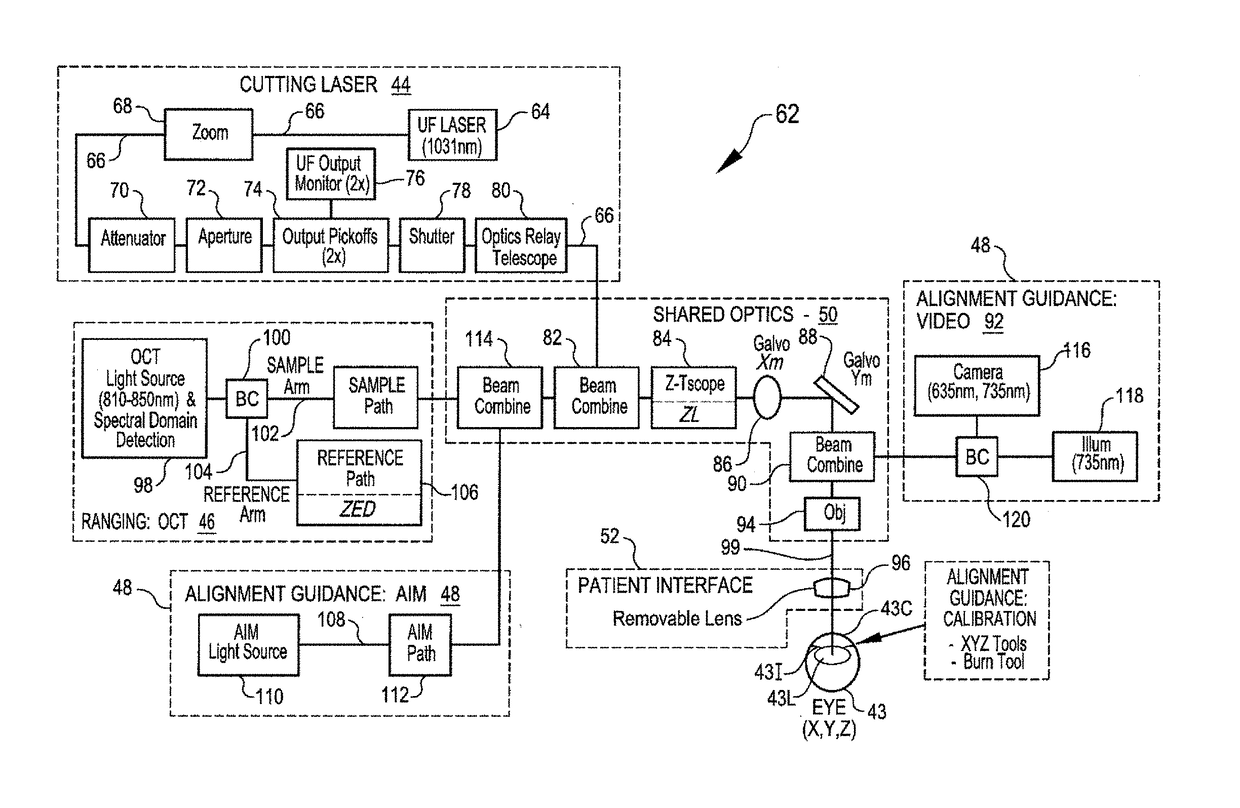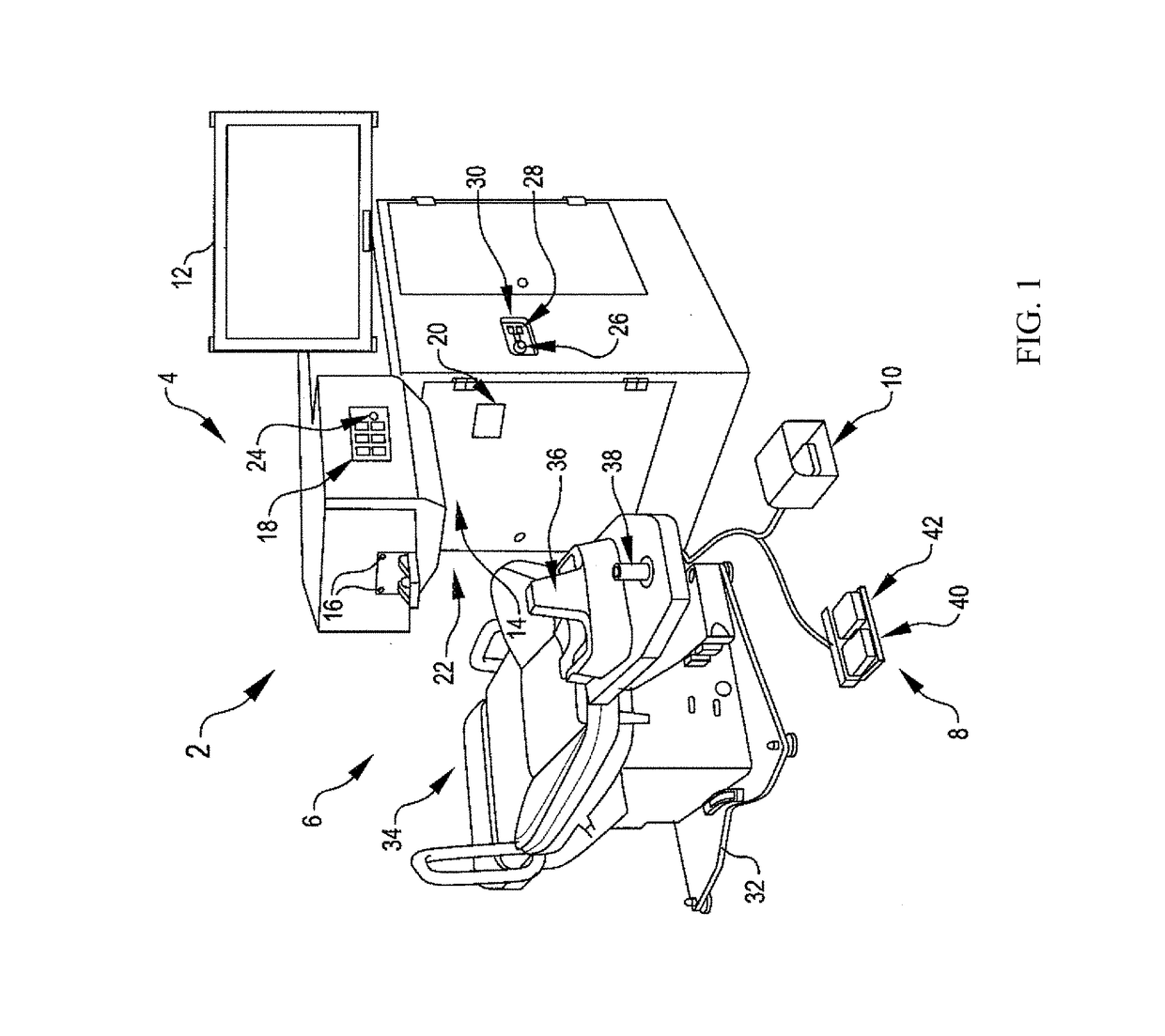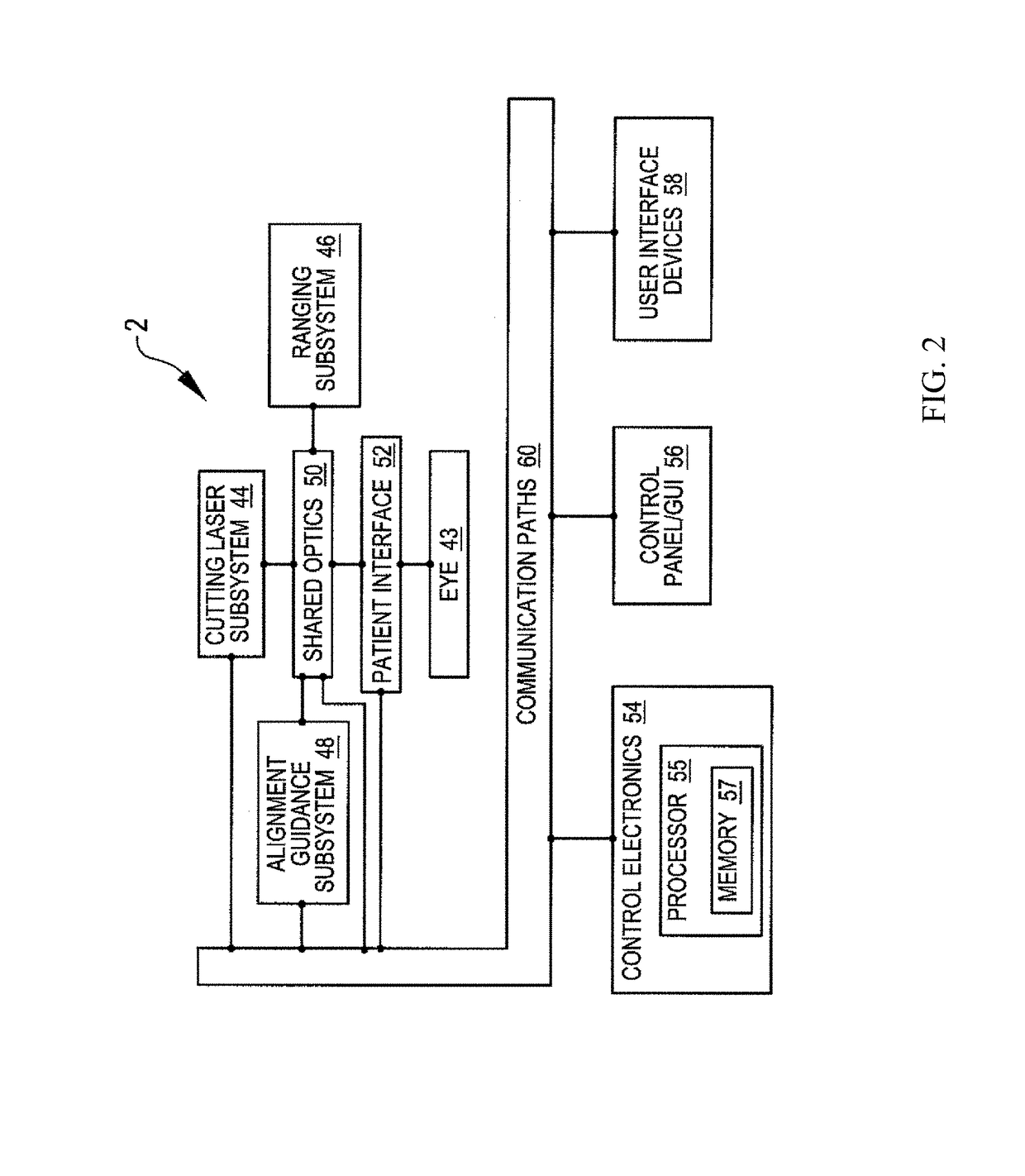Methods and systems for opthalmic measurements and laser surgery and methods and systems for surgical planning based thereon
a technology of applied in the field of methods and systems for opthalmic measurement and laser surgery, and methods and systems for surgical planning based thereon, can solve the problems of less than ideal optical characteristics, irregularities of the eye may not be easily corrected with prior methods and apparatuses, and less than ideal patient outcomes, etc., to achieve the effect of improving accuracy
- Summary
- Abstract
- Description
- Claims
- Application Information
AI Technical Summary
Benefits of technology
Problems solved by technology
Method used
Image
Examples
Embodiment Construction
[0070]Methods and systems related to ophthalmic measurements and laser eye surgery are disclosed. In many embodiments, a laser is used to form precise incisions in the cornea, in the lens capsule, and / or in the crystalline lens nucleus. Although specific reference is made to tissue resection for laser eye surgery, embodiments as described herein can be used in one or more of many ways with many surgical procedures and devices, such as orthopedic surgery, robotic surgery and microkeratomes.
[0071]The embodiments as described herein are particularly well suited for mapping the index of refraction with a first beam having first one or more wavelengths of light. The mapped index of refraction can be used to determine the physical location of the tissue structure, in response to a mapped index of refraction along the measurement beam path extending to the tissue structure, for example.
[0072]A laser may be used to form precise incisions in the cornea, in the lens capsule, and / or in the cry...
PUM
 Login to View More
Login to View More Abstract
Description
Claims
Application Information
 Login to View More
Login to View More - R&D
- Intellectual Property
- Life Sciences
- Materials
- Tech Scout
- Unparalleled Data Quality
- Higher Quality Content
- 60% Fewer Hallucinations
Browse by: Latest US Patents, China's latest patents, Technical Efficacy Thesaurus, Application Domain, Technology Topic, Popular Technical Reports.
© 2025 PatSnap. All rights reserved.Legal|Privacy policy|Modern Slavery Act Transparency Statement|Sitemap|About US| Contact US: help@patsnap.com



